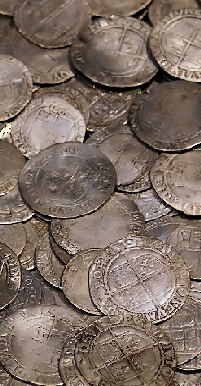
● Next Meeting Status:
Cancelled

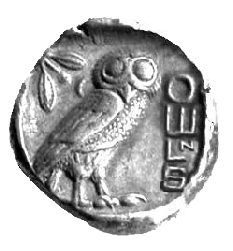

● Host Society for the
BANS 2011 Congress
held in Southport


The Halsall Penny and Colonel Mordaunt’s Mill
How Happenings In A Lancashire Village Changed The World
Whenever is told the story of the Industrial Revolution, the Lancashire village of Halsall and the name of Colonel Mordaunt seldom feature largely, and yet in a succession of three individually small events they influenced the course of affairs which changed the basis of human society and brought about the world we live in today. These are great claims, but can they be justified?

Our story really begins with Colonel Mordaunt. Charles Lewis Mordaunt was born in 1730 to father Charles, a nephew of the Earl of Peterborough, and mother Anne, formerly Anne Howe. As did many scions of the nobility, Charles Mordaunt entered upon a military career, serving in the Guards, and travelling out to India where he developed a taste for exotic pastimes, including cockfighting.
Promotion in the army came quickly, as it could to those of adequate means in the days of purchased commissions and by 1765, when he retired from the service, Mordaunt had reached the rank of Colonel. His retirement may have been prompted by his acquisition, in the early 1760s, of the Mohun estate at Halsall by marriage to the widow of Lord Mohun, and it was at Halsall Hall that Mordaunt took up his residence. The Mordaunt coat of arms was placed over the door leading to the courtyard at the rear of the Hall, and a spouthead still exists bearing the date 1769 together with the crest and initials of Col. Mordaunt.
Change was in the air: the Colonel bored for coal in the Rectory garden -
But for other reasons, Halsall, still a sleepy backwater, would soon become famous.

Where to next?

The First Event
One of the major constraints on economic development in the eighteenth century was
the appalling state of transportation. The roads alternated between mud baths and
dust bowls, depending on the season, while navigable rivers were few and far between.
Relatively small scale works, such as the Douglas Navigation between Wigan and the
Ribble Estuary, had improved matters to some extent, but in 1767 two groups of far-
In 2006 a stone statue of the 'Halsall Navvy' by sculptor Thompson Dagnall was unveiled adjacent to the canal in Halsall to commemorate this event.

The Second Event
In his story so far, Col. Mordaunt seems to have followed the typical career of a gentleman of means, but at some point, now uncertain, the Colonel seems to have taken up the trade of cotton spinning. Equally uncertain is whether there was already a mill at Halsall, or whether Col Mordaunt started from scratch, but start he certainly did. The first positive evidence we have is found in a letter which he wrote to the Secretary At War on 7th October 1779, at the time of the cotton riots in Lancashire, giving warning of a riotous mob forming at Halsall. A sergeant and fourteen soldiers were sent from Liverpool to maintain order, and presumably protect Halsall Mill.
Unlike many of his class, it seems as though Col. Mordaunt took more than a passing interest in the operation of his enterprise. A letter to the Society of Arts, written in 1780, refers to some development of the water wheel powering his mill:
'Having erected a considerable work by his majesty's Patent and being deficient in Water during the Summer Months, I thought of reworking the Water by the means enclosed, if it answers in operation, it will be an Acquisition of great consequence to Mechanics.'
It appears as though Col. Mordaunt believed he had achieved some kind of perpetual motion machine, and the paper was 'laid aside till further Notice.'
The reference to 'his majesty's Patent' concerned a patent which had been granted to Col. Mordaunt in 1778 for 'preparing cotton, sheep's wool, and flax; materials and necessary articles for manufacturing cotton and linen cloth.' Richard Arkwright's patents of 1769 and 1775 were still in force, and it seemed likely that some part of Col. Mordaunt's 'considerable work' might infringe Arkwright's rights. He certainly thought so, and as part of a programme of intended retribution against infringers of his patents, Arkwright launched a series of law suits in 1781 against ten mill owners whom he considered to be the principal culprits.
The Lancashire Ten decided that an attack on one was an attack on all, and agreed to mount a common defence. One of the Ten was Col. Mordaunt who, according to a leading Treasury Counsel of the time was 'a gentleman of family but not much fortune, who was thought from the lightness of his purse, the fittest to be put in the front.' Fortunately for Mordaunt, Arkwright lost the case, but because of the rather primitive nature of patent law at the time, did not lose his patents. This had to wait for a further trial in 1785 when the overthrow of the patent restrictions resulted in a massive expansion of mechanisation in the cotton industry. Arkwright's consolation was a knighthood, awarded in 1786.

The Third Event
By 1782, Col. Mordaunt could write to the Duke of Rutland:
'I am obliged for your enquiries after my health and our little work at Halsall.
We have 600 spindles complete with their appendages -
By this time, the mill is recorded as being powered by an eighteen foot diameter overshot water wheel, fed by a stream. To anyone who examines the topography of Halsall today, it is quite difficult to understand quite how such a fall of water could ever have been achieved.
The relative scarcity of water, and the lack of height to provide a fall to drive the wheel, undoubtedly explain why, in 1782, Col. Mordaunt, through his Mill Superintendent John Moon, opened discussions with Boulton and Watt, of Soho, Birmingham, for the possible supply of a 'patent Fire Engine' which would be used either to pump water to operate the water wheel, or to operate the mill directly.
Whatever the irregularity of the water supply, it was nothing to the irregularity
of the coinage. Effectively, no silver had been coined since 1758, and the Royal
Mint had ceased production of copper in 1775. Increasing industrialisation meant
an increasing burden for employers who required cash to pay their employees, and
who were ever more unable to find sufficient quantities. There was no real shortage
of money; there were local and Bank of England bank notes, and an adequate supply
of gold coins. The real need was for small denominations which bore some relationship
to the costs of living for mill workers. Worn-
We will never know why, or when, the linkage occurred in Col. Mordaunt's mind, between his two perennial problems, water and cash, but there is no doubt that on 2nd December 1783, Superintendent John Moon wrote what has become one of the most significant letters in eighteenth century numismatics. It was addressed to Boulton and Watt:
Gentlemn.
We are frequently at a loss for Good Copper to pay the Hands employed under the Honrble Colonl Mordaunt at his Cotton Works now in a very flourishing state; His Honor order’d me this Day to write to you for a Die to Stamp Copper; The value of one, must be one Penny the other Two Pence; Or the weight of Four good Half Pence for the support in payment of the hands at his Works The Die with the Earl of Petersbourgh’s Coat of Arms on one side; And the word Halsall across the back. As you are coversant in Novels; I wish you to make (or procure made) the above mentioned Die for His Hons use; In this youl merrit the esteem of His Honr
For whom, I am yr most Obt Servt.
John Moon

Certainly the pennies exist, today, though there has never been any indication that two pences were ever produced.
Certainly the designs of the coins are precisely as set out in Mr Moon's letter.
But in 1783, Matthew Boulton did not have a mint, as such, and whether he took the
matter up, or whether he let it go to another manufacturer, we do not know. Boulton
might have made the coins -
But whatever the source of the Halsall Penny, it seems likely that it pre-

Speculation, questions, but not many answers
But the Halsall Penny was not, of itself, a flood. Writing in 1908, in his 'Notes on Southport and District,' the Rev W T Bulpit described the Halsall tokens as 'now very valuable' but while the coins are not rare, neither do they appear in the bottom of junk boxes in street markets, as do the tokens of the Parys Mines and John Wilkinson.
Where was Col. Mordaunt's Mill? There should be an easy answer to a simple question such as this, but there isn't. The few local records which mention the mill seem to assume that everyone knew where it was! There are two possible sources of water. The photograph at left shows a watercourse running towards Halsall village, having passed underneath the Leeds and Liverpool canal. There are no signs on the surface of the ground in the village itself, and it has been suggested that the mill might have been in the basement cellars of the Hall itself. More likely is that the mill was in a separate building, in a field at the back of Halsall Hall itself, fed by the brook
When were the Halsall Pennies produced? There is no definite information; presumably some time after 2nd December 1783, and most probably before the advent of the Anglesey tokens in early 1787.
What purpose did they serve? R C Bell in his learned review of 'Commercial Coins' suggested that the Halsall tokens might have been estate passes, serving as admission tickets to the Mill and environs. The letter from Superintendent Moon surely disproves this theory. There can be little doubt that the pennies were intended to pay the workforce.
Where did they circulate? The area of their circulation is somewhat speculative, but in the Lancashire Record Office at Preston is a document headed 'State of the Copper Coins in Circulation at Liverpool, Anno 1791' which lists, in order and including the Halsall Penny, the best tokens to be found, but makes the note 'Mordaunt not in circulation.' Although disappointing, in that 'our' pennies were not in use, the document does indicate that they were well enough known in Liverpool for their absence to be something worthy of note. So it would seem reasonable to assume that they circulated generally in the area, and were not restricted to a factory 'truck' shop, as has been suggested.
Why did they go out of use? A possible reason for the decline in circulation centres on the weight of the tokens, and the reluctance of the people to accept light weight pieces. As long as Col. Mordaunt's pennies were unique, their weight of 25 pieces to the pound of copper would not matter; they were vastly better than anything else in circulation. When the Anglesey pennies arrived in 1787, their weight of 16 pieces to the pound would make them significantly more acceptable, and the Halsall pieces would meet with rejection.

The End?
There is no evidence that Col. Mordaunt repeated his experiment in coinage. Perhaps the ubiquitous tokens from Anglesey, and then slightly later, those issued by Iron Master John Wilkinson and the myriads of Liverpool Halfpennies ascribed to Thomas Clarke, made a second token unnecessary. But whatever did or did not happen later, to Colonel Charles Lewis Mordaunt belongs a significant place in the numismatic record.
The Colonel died in Ormskirk on 15th January 1808 aged seventy eight, and is possibly buried in the Parish Churchyard. The manor was sold to Thomas Eccleston Scarisbrick, of Scarisbrick, and the advowson to Jonathan Blundell, of Liverpool
Reviewing the history of the Halsall Penny today is fascinating, but is an exercise in frustration. There is just enough certain knowledge to whet the appetite, and enough knowledge missing to make much of the story speculative. But that is the nature of numismatics! But possibly, just possibly, they represent Matthew Boulton’s first tentative steps into coining.
Chris Leather
Flat Discs & Evasions
By the 1780s the coinage
was worn-
insufficient to meet the
demands of a rapidly
industrialising economy
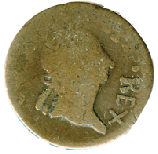
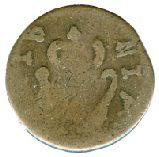
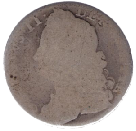
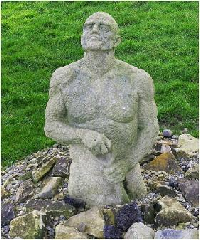
The Halsall Navvy byThompson Dagnall
on the bank of the Leeds & Liverpool Canal, Halsall, Lancashire
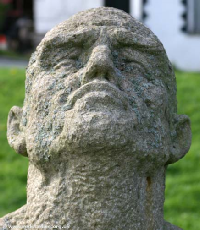
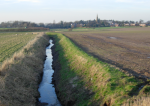
Hover your cursor to
see the scene in detail
Looking toward Halsall Village, the Parish Church towards the right, from the bank of the Leeds & Liverpool Canal
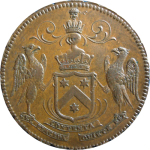
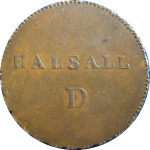
The Halsall Penny
Designed by ?
Dies Engraved by ?
Coins struck by?
The first token of the
Industrial Revolution
Hover your cursor
